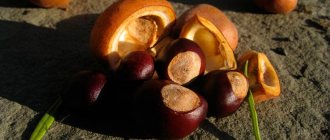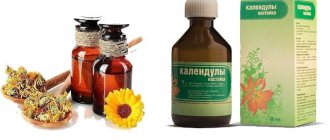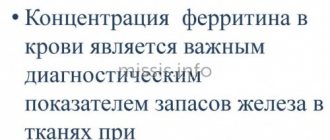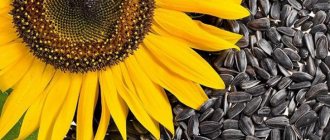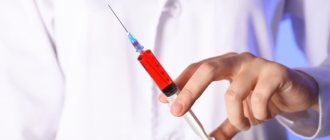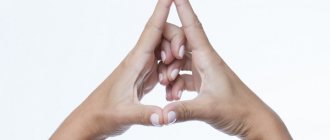Iodine is a very popular remedy that is used to prevent and treat a wide range of diseases. Hypertension is no exception; there are several methods of treating this disease with iodine.
Lack of iodine in the body negatively affects the health and function of the heart. Iodine deficiency can lead to hypertension and other cardiovascular diseases. If the deficiency of this element in the body is not eliminated, then even taking medications that help normalize blood pressure may not bring a positive result.
That is why it is very important to maintain normal not only blood pressure, but also the level of iodine in the body.
How does iodine affect blood pressure?
A deficiency of this element can cause a number of health problems, such as:
- arrhythmia;
- chronic fatigue;
- obesity;
- deterioration of metabolic processes in the body;
- bradycardia.
The appearance of these symptoms indicates insufficient function of the thyroid gland, which in turn contributes to the formation of high blood pressure.
The exact mechanism of iodine's effect on the human body is currently unknown. But the fact that therapy with this remedy in some situations helps reduce the patient’s blood pressure is a fact confirmed by many positive reviews.
The healing properties of the chemical element
Treatment of hypertension with iodine can only help in the early stages. And, of course, this does not mean that you do not need to follow a diet. Be sure to adjust your lifestyle - without this, the result will be zero.
Iodine is the most important component found in the human body. It is necessary for stable functioning of the thyroid gland, kidneys, liver, and lungs.
The main sources of iodine are sea fish and seafood, as well as vegetables and fruits.:
- beet;
- lettuce leaves;
- spinach;
- apples;
- plums;
- cherry;
- persimmon.
Buckwheat and many dairy products are rich in iodine.
Iodine affects active brain activity , takes part in proper metabolism, removes excess fatty tissue, gives energy and improves mood, and affects hormonal levels.
A large percentage of people who use this method actually experience positive results. It is possible that the placebo effect also plays a role. In most cases, it is known for sure that excess or deficiency of iodine affects blood pressure.
Taking a test for iodine deficiency at home
It is easy to determine iodine deficiency in the body at home. Before going to bed, you need to draw a square on any part of the body, and check it in the morning:
- If iodine has already been completely absorbed, it means that there is a significant lack of iodine in the body. In this case, it is necessary to undergo therapy using this substance;
- If iodine is still on the body in the morning and any remaining iodine has been absorbed within 24 hours, the amount of iodine in the body decreases. In this situation, high blood pressure can also be caused by a lack of this ingredient, and it makes sense to treat with this substance;
- If you still have traces of iodine on your body after 24 hours, you don't need to worry about being deficient. This fact indicates that increased blood pressure cannot be caused by a deficiency of this substance. There is no point in resorting to prescriptions for treating a disease with this remedy.
Side effects from the eastern method
Treatment with iodine has its contraindications, non-compliance with which can lead to side effects. An overdose also causes a negative reaction.
The most commonly observed negative symptoms are:
- skin rashes,
- pain in the abdominal area,
- severe headaches and dizziness,
- extensive swelling of the skin and mucous membranes,
- tearfulness of the eyes,
- drowsiness, sleep disturbance (insomnia),
- vomiting and nausea.
Folk and traditional methods of treatment with iodine
To reduce blood pressure using this remedy, the Indian methodology has proven itself to be excellent. It is based on the external method of applying the product and consists of applying iodine circles on certain areas of the body.
The method allows you to compensate for iodine deficiency in humans, stabilize blood pressure, restore heart rhythm, and improve immunological properties. Be sure to use this recipe before bed.
For hypertension, iodine can also be used orally. Iodized tablets and solutions may lower blood pressure. But you need to calculate the exact dose for oral administration, and these treatment recipes can cause side effects in the body.
Blue iodine helps normalize short-term or chronic pressure surges. Its component is ordinary iodine, processed by a special method. Blue iodine differs from regular iodine in that the possibility of poisoning is practically reduced to zero. It is available in the form of dietary supplements.
Contraindications
Iodine is toxic. Overdose causes damage to the kidneys and cardiovascular system. The lethal dose is 3 grams.
The use of the Indian method is strictly prohibited in the following cases:
- Sensitization is rare and occurs in children; During the treatment of wounds, abrasions, rashes, swelling, burns;
- Taking medications containing iodins, nutritional supplements;
- Skin damage: wounds, rashes, equation;
- Headaches, toothache, fever;
- Removal of the thyroid gland - partially or completely;
- Primary, secondary hyperthyroidism - with severe disorders of the thyroid gland cannot function properly;
- Sensitive skin - high risk of burns;
- Pregnancy, breastfeeding;
- children, adolescents under 12 years of age;
- Cannot be combined with ammonia and mercury.
The most common poisoning is caused by inhalation of iodine vapor, consumption of alcoholic tincture, Lugola, Jodoform. Poisoning is manifested by headache, cough, vomiting, brown coating on the tongue and general weakness. Later, pain in the heart and rapid heart rate. Two days later, renal failure and myocardial inflammation.
The Indian treatment method gives results if the excess pressure is caused by abnormal functioning of the thyroid gland. Due to possible side effects, always consult a physician before use.
Applications of blue iodine
This substance can have a fairly broad effect on the human body:
- decreased blood pressure;
- cleansing blood and blood vessels;
- general strengthening effect and so on.
Among the most popular blue iodine treatment methods are the following:
- As a preventive measure against high blood pressure, it is recommended to take the supplement 2-3 times a day, 4 teaspoons before meals. After 3 days of use, it should be stopped for 2 days. Then the intake is extended to 5 days with a break of 3 days, then the dietary supplement should be taken for 3 days, followed by a two-day break. This prophylaxis schedule should be followed for 30 days.
- In order to normalize blood pressure, it is recommended to take blue iodine 2 times a day, 4-8 teaspoons before meals. The number of teaspoons depends on your blood pressure - the higher it is, the more teaspoons you need to eat.
Indications for CT with contrast
A CT scan with contrast is possible upon referral from a doctor. It is necessary in a number of cases:
- Investigation for suspected pathological process. For example, oncology, thrombosis, vascular pathologies, abscess, intestinal obstruction, developmental abnormalities.
- Research for emergency indications. It is performed for severe injuries, brain hemorrhages, and damage to organs and blood vessels.
- Scheduled diagnostics.
- Clarification of primary research.
- Monitoring the result of treatment.
- Preparation for surgery.
CT with contrast can detect diseases:
- intussusception;
- lymphoma;
- cancer of the intestine, lungs, musculoskeletal system, brain, liver, etc. (helps identify metastases, enlarged lymph nodes);
- stenosis of various etiologies;
- congenital pathologies.
Important: If you need to have a CT scan with contrast, preparation for the study should be made based on the results of laboratory tests. If the tests do not satisfy the quality of the attending physician, the diagnosis will have to be rescheduled.
Indian method of treating hypertension: scheme and features of the procedure
The Indian method of treating arterial hypertension should be used only in March and September. In the remaining months of the year, this does not give positive results.
If you're having fun, you'll be able to use iodine in other ways, and if you're doing well, you'll be able to use it in other ways. It consists of the following elements:
- On the first day of the month of therapy, draw a strap on your left hand just above the wrist;
- On the second day, draw a strap on the right leg above the ankle;
- On the third day, draw a circular line just above your right wrist;
- On the fourth day, repeat the same operation on the left leg above the ankle;
- On day 5, draw the left arm above the circular line of the elbow.
- 6. You should draw a line down your right leg above the knee;
- The seventh day of the fifth procedure is repeated for the right hand;
- On the eighth day you should draw a ring on your right knee;
- On day 9 there will be survey help. Break the Yoda belt on your back from your left hand to your right thigh. The strap should not be closed, it should only be back;
- On the 10th day, repeat the previous procedure, but from the right shoulder to the left thigh.
In addition, from 11 to 20 days of the month, take a break, and from day 21 they again duplicate the entire therapy formula.
Indian treatment will give a positive result if this procedure is repeated every year in accordance with the above scheme.
Initial levels of hypertension This formulation can be successfully treated and get rid of more serious types of diseases based on consultation with a specialist doctor and strictly following his instructions.
What is contrast
A contrast agent is a safe chemical compound made from iodine- and sulfate-containing components. The use of contrast expands the diagnostic capabilities of computed tomography, allowing you to quickly detect pathological changes in the area of the body being examined.
Has the following features:
- Contrast allows you to “highlight” pathologically altered areas of the body (tissues of organs, blood vessels, etc.). This occurs due to the fact that the substance lingers in them and begins to accumulate, which is clearly visible on CT images.
- The contrast quickly spreads throughout the body, easily detecting abnormal veins, varicose plaques, neoplasms, blood clots, allowing specialists to see the localization of the disease, its boundaries, and determine the stage.
Important: To know how to properly prepare for a CT scan with contrast, you need to talk with your doctor. He will talk about the main points of preparation, and also explain what needs to be done if, for example, you have complex chronic diseases such as diabetes, hypertension, lupus).
Therapy with iodine tinctures
Iodine tinctures are also used to relieve hypertension. They can be alcoholic, water or milk. A way to treat high blood pressure using an alcohol tincture is to take a few drops of the solution internally. This treatment will help reduce pressure values, restore the flexibility of the walls of blood vessels, the blood flow, strengthening the immune system.
Treatment of high blood pressure is also allowed with an aqueous solution of iodine. You need to take 10 drops of this substance into a glass of cold water. It is recommended to drink the solution 2 times within 24 hours, half an hour before meals. The duration of such therapy should be 1 month.
Taking iodine in milk can also help reduce blood pressure. To prepare it, you will need a glass of slightly warm milk, 15 drops of the substance. The solution should be drunk 3 times a day after meals. The duration of therapy with this solution is also 1 month.
However, it should be remembered that iodine therapy is absolutely contraindicated for people suffering from gastrointestinal disease, liver and pancreas. And iodine entering the stomach irritates it and complicates the diseases associated with it.
Classification
Based on the causes of occurrence, gouty arthritis is divided into forms:
- primary
– associated with hereditary characteristics of purine metabolism and excretion of MUN by the kidneys; - secondary
– the cause of development is some other diseases, nutritional disorders, bad habits, etc.
According to the mechanism of accumulation of MUN, gout is divided into types:
- metabolic
– increased internal production of purines during their normal excretion by the kidneys; - renal
– impaired excretion of uric acid by the kidneys; - mixed
.
By severity:
- mild course
- attacks of gouty arthritis no more than 2 times a year with damage to no more than two joints; single tophi no more than 1 cm in diameter; there are no complications from the kidneys or impaired joint function; - moderate severity
- no more than 5 attacks per year affecting no more than 4 joints with minor changes in cartilage and bone tissue; a large number of small tophi; stones in the kidneys; - severe
– attacks of gouty arthritis more than 5 times a year, multiple large tophi and arthritis; decreased kidney function.
Symptoms of gouty arthritis
The appearance of the first symptoms of gouty arthritis is sometimes preceded by a long-term increase in the concentration of urate in the blood. Therefore, men after 40 years of age, and women after menopause, need to periodically check the content of uric acid salts (UA) in the blood. This is especially important for those who have close relatives suffering from gout. Gouty arthritis develops when the concentration of urate in the blood exceeds 0.4 mmol/l. But with such an indicator, arthritis manifests itself only in a fifth of patients; the rest may not be aware of their risk of developing gout.
Primary signs
The first attack of acute gouty arthritis begins suddenly. Sharp pain appears in the affected joint, the tissue over it swells, and the skin turns red. The pain is very strong. The body temperature may rise and the general condition of the patient may be disrupted.
Severe pain in the affected joint, high body temperature and poor condition of the patient are the first signs of gouty arthritis.
In half of the cases, gouty arthritis begins with damage to one joint. This is usually the first metatarsophalangeal joint of the foot. The knee, elbow, small joints of the hand, etc. may also be affected.
Symptoms of gouty arthritis are especially pronounced at night.
Obvious symptoms
The attack of gouty arthritis lasts from 2 days to 2 – 3 weeks. Then complete remission occurs without any consequences. The next attack usually develops within a year, but sometimes remission lasts several years.
Acute gouty arthritis can recur over a number of years, but gradually its course becomes chronic. Several joints are asymmetrically affected, including the first metatarsophalangeal joint on the lower extremities.
Under the skin on the extensor surface of the joints, as well as in the area of the ears, tophi appear - small superficial nodules or larger subcutaneous nodes with a cartilaginous consistency. They are painless, but can become inflamed during an exacerbation of gouty arthritis. In this case, they become painful and sometimes break through to the surface of the skin in the form of a whitish mass.
Attacks of urolithiasis may occur - urates are deposited on the walls of the urinary tract, as well as in the kidneys, which leads to disruption of their function.
When you need to see a doctor urgently
You should seek medical help if:
- joint pain appeared, accompanied by severe redness and swelling of the tissues; body temperature increased, chills and malaise appeared;
- severe paroxysmal pain appeared in the lower back - an attack of urolithiasis;
- joint pain also bothers you during the interictal period - a sign of the chronic course of gouty arthritis.

